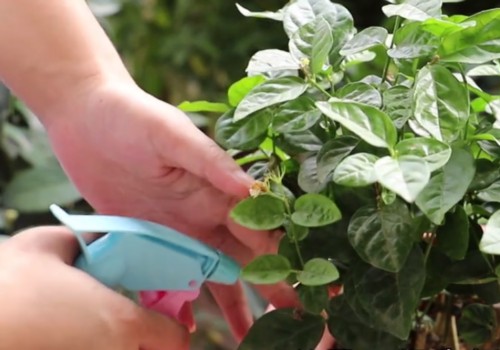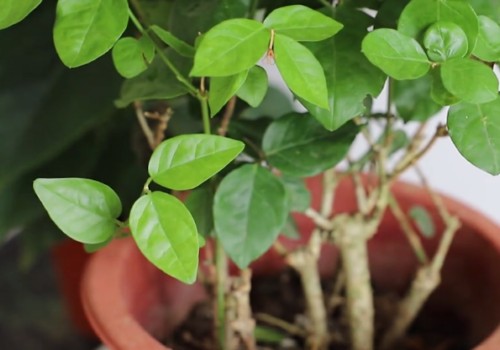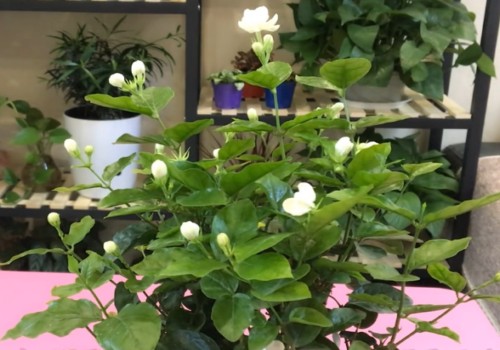Maintenance and management skills of jasmine
Jasmine is a snow-white evergreen plant, which often makes people feel its pure beauty at every flowering stage. At the same time, when jasmine blossoms, it will give off a delicate fragrance, which makes people feel relaxed and otherworldly, and the elegant beauty of jasmine is also loved by lovely little girls. But if we want to raise jasmine well, we also need to master certain skills.

Jasmine is a kind of flowering plant that likes warm, humid and sufficient light growth environment. In addition to suitable humidity and light, it also requires good ventilation in the maintenance environment. And jasmine this kind of plant is generally afraid of cold, not cold-resistant, but also afraid of drought, so if you want to raise jasmine well, you need to provide a suitable growth environment for it first.
Although the flowering period of jasmine is very long, the original can blossom three times a year, or even make it blossom in four seasons. However, it is precisely because it likes wet and afraid of drought, warm and cold, so it should do a good job of maintenance and management in summer and winter. In summer, the temperature is often high, the weather is hot, and water consumption is obvious, so in addition to timely watering, water is often sprayed to cool and moisturize; in winter, because the temperature is low and the plant is not hardy, it is easy to enter a dormant state, so it is necessary to ensure that the ambient temperature is not lower than 12 °C before it can blossom.
Light is very important for the growth and flowering of jasmine. if there is not enough light, plants are prone to many bad growth phenomena, such as yellow leaves, deciduous leaves, overgrowth, no flower buds, sterile buds, early withering of flowers and so on. It is generally necessary to provide 4-5 hours of light for the plant every day. And as long as the light is not particularly strong, it can provide full sunlight, especially in winter. But after the flower needs to control the light, generally provide sufficient scattered light, direct light to give too much is not good.
Not only that, if we want to keep the jasmine blooming and prolong the florescence, we must prune it in time after each round of flowers. First of all, cut off the residual flowers, and cut short the branches and leaves of the flowers that have flowered at the same time, generally retaining 2-3 nodes. Do not worry that it will affect the late flowering, because jasmine blossoms one crop after another and blossoms from new branches.
After flowering, in addition to timely cutting off residual flowers and short cut branches, it is also necessary to cut off old, weak, damaged, dry and withered branches, overgrown branches, and so on, and if there are branches that are too dense, they also need to be thinned properly, so as to improve the ventilation and light transmittance of potted plants. After the above pruning, unnecessary nutrient consumption can be avoided, and the plant can concentrate more nutrients to promote the germination of new branches and buds.
Usually when a new flower branch pulls out 3-4 pairs of leaves, it begins to give birth to buds and then blossoms again. However, if the pregnant buds are too early, and in the case of a small number of buds, it is recommended that we take them off, because even if they are not removed, the effect of flowering is often not good, and even there are only buds without flowers, and a lot of nutrients will be consumed in vain.
Jasmine likes to be fertilized, especially when it consumes a lot of nutrients during flowering, so it should be prepared in advance. Nitrogen fertilizer can be applied during the growing period, but phosphorus and potassium fertilizer can be changed to topdressing fertilizer in bud, at this time, less nitrogen fertilizer can be applied, or even no fertilization is needed. And the effect of the selected fertilizer can not be too strong, can be less irritating organic nutrient solution, can be applied once a week, this kind of fertilizer is safer to use.
Time: 2019-05-27 Click:
- Prev

How to maintain jasmine in flowering period
Jasmine flowers white and accompanied by fragrance, the flowering period is very long, from May to November, is unmatched by many flowers and plants. However, when jasmine enters the flowering season, conservation management often needs to be more careful than usual. So, how to maintain the jasmine flowering period? The first thing we need to talk about is basin soil.
- Next

Maintenance and management methods of jasmine before and after flowering
Jasmine not only blossoms beautiful, but also very fragrant, coupled with the leaves remain green all the year round, so it is better to raise it as a pot. This not only allows us to enjoy its flawless flowers, but also makes the space full of fragrance. But if you want to raise potted jasmine,
Related
- Fuxing push coffee new agricultural production and marketing class: lack of small-scale processing plants
- Jujube rice field leisure farm deep ploughing Yilan for five years to create a space for organic food and play
- Nongyu Farm-A trial of organic papaya for brave women with advanced technology
- Four points for attention in the prevention and control of diseases and insect pests of edible fungi
- How to add nutrient solution to Edible Fungi
- Is there any good way to control edible fungus mites?
- Open Inoculation Technology of Edible Fungi
- Is there any clever way to use fertilizer for edible fungus in winter?
- What agents are used to kill the pathogens of edible fungi in the mushroom shed?
- Rapid drying of Edible Fungi

